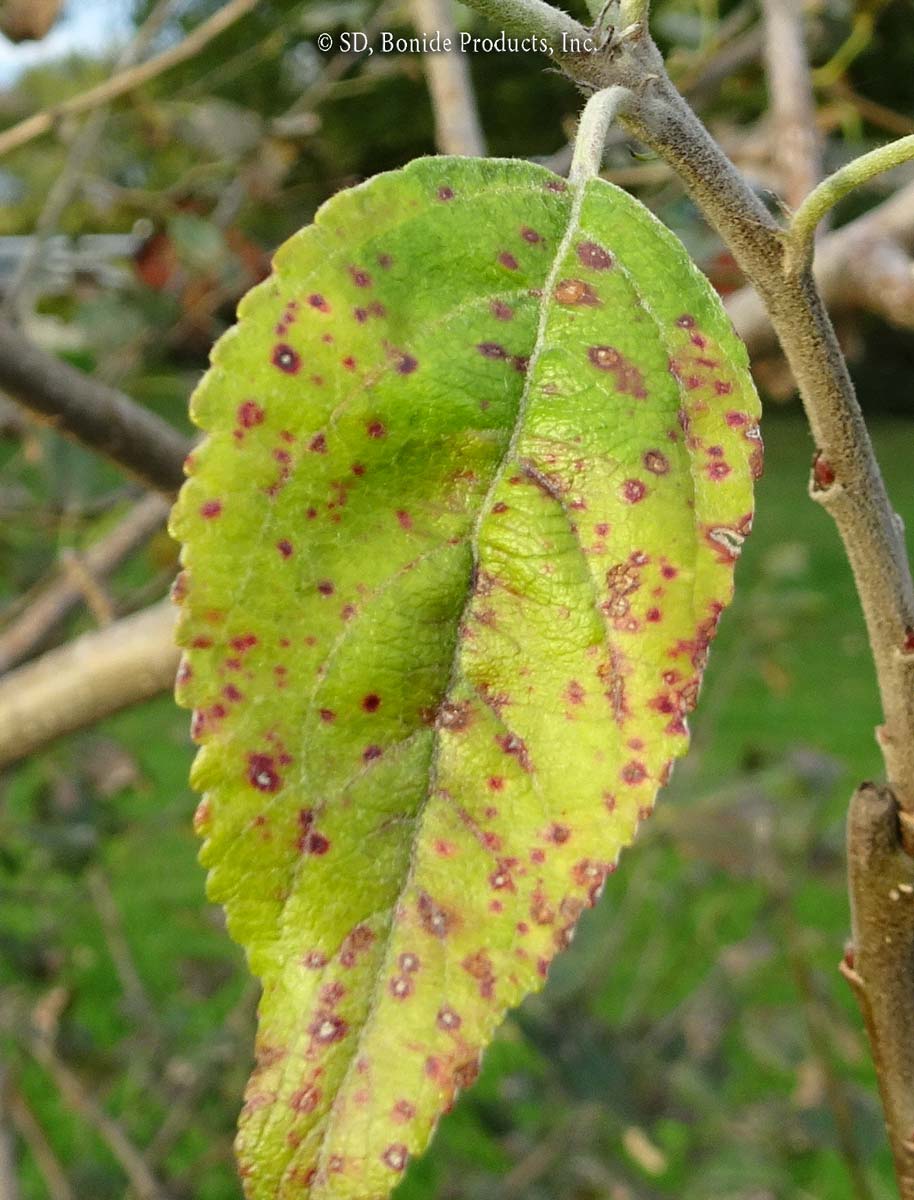
This fungus survives the dormant season in the infected leaves and twigs. Black fruiting structures develop in leaves from the previous season during late winter and early spring. Release of spores occurs during wet periods in the spring and they infect young leaves, shoots, and fruit. One to three weeks after infection velvet-like, dark-green fruiting structures and spores form. The conidia infect new growth if conditions are wet for about six hours and the air temperature is mild. Repeating episodes of spore release and infection occur throughout the growing season. Moist spring and early summer weather accompanied by cool temperatures favors this disease. Target: Infects apple, crabapple, several species of mountain ash, cotoneaster and pear trees. Damage: Leaves, flowers, fruit and green twigs are susceptible to infection. The first symptoms are water soaked lesions that turn olive green to dark gray and develop a velvety appearance. Eventually infected leaves turn yellow and drop from the tree prematurely, leading to completely defoliated trees by mid to late august. Control: Fungicides, fruit tree sprays, proper pruning. Notes: Remove and dispose of infected leaves near the tree during and after the growing season. This will reduce but not eliminate inoculum available for infection. Prune rapidly growing water sprouts emerging from branches, since many of these water sprouts apple scab lesions on them. In addition, prune to increase air circulation and sunlight penetration into the canopy, which promotes drying of foliage. To minimize disease problems, the best time to prune is in the late winter or very early spring before new growth starts. Otherwise, prune when the bark and weather conditions are dry. Consider growing varieties or species of apple, crabapple, and mountain ash that are resistant to apple scab.
Bonide Solutions
- 1
- 2










